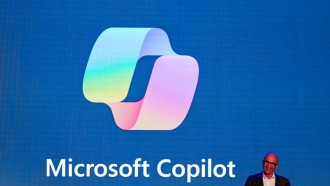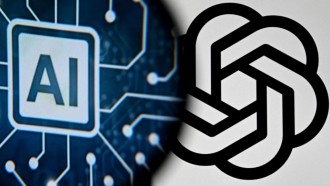
While Americans have never had better credit, millions of people in the U.S. still face barriers when getting a mortgage, purchasing a new car, or handling an unexpected expense. Some 106 Americans don't have credit scores that traditional credit assessment models consider creditworthy.
Either too low or non-existent, these credit scores may lock them out of funding altogether.FinTech is aiming to fix that. With the help of credit scoring agencies in the U.S., FinTech lending services are expanding access to customers with bad credit.
How Financial Institutions Determine Creditworthiness, the Old-Fashioned Way
Creditworthiness is a measure of how likely you'll be approved for a loan- whether it's for a mortgage, auto loan, or line of credit. It's a risk assessment for financial institutions to determine if you'll pay back what they lend.
On a scale of creditworthy and not, creditworthy means financial institutions are willing to grant you funds. If you're deemed not creditworthy, you may find it harder to get approvedat prime rates, even if you need money now in an emergency. Having said that, not all financial institutions offer risk-based pricing.
Traditionally, many financial institutions determine your creditworthiness by assessing your credit report. This report tells the story of your financial history as a borrower, showing the way you've handled credit cards, installment loans, and lines of credit in the past. It shares how much debt you have, your payment history, and your balances vs credit limits of revolving products.
Your credit score - a three-digit number that falls between 300 and 850 - is a numerical value of the details in this report and may be assessed along with your file.
Prime credit, which is anything above 660 today, reflects a report packed with good borrowing history. Only those who pay their bills on time and limit how much debt they carry on revolving credit can boast this score.
The Average American is a Prime Borrower
According to the latest FICO data, the average credit score in the U.S. hit an impressive 716 in 2021. Firmly within prime credit territory, this record-breaking number is the highest these scores have ever been,climbing five full points from 2020.
Despite the financial hardships caused by the pandemic, the average American now has "very good" credit.
In other words, they're creditworthy. Under traditional credit assessment models, this kind of score opens financial doors. You'll find it easier to qualify for a variety of personal loans, credit cards, and line of credit personal loans.
Many Americans Still Have Bad Credit
As with any average, there are those who exceed this number and those who fall short. According to FICO, more than one-third of FICO scores fall below the national average. More still, about a quarter of theseconsumers have subprime credit.
These borrowers may have some trouble getting the same kinds of short term personal loans as their prime friends and colleagues.
According to one report, 76% of people who apply for a personal loan are declined, often over subprime credit. They may still find installment loans for bad credit through online direct lenders, but they may face higher interest rates and fees for the trouble.
Classically, bad credit poses a red flag for many financial institutions, so they may raise their costs or reduce their loan size to offset the risk of lending money.
Who Doesn't Have Access to Credit?
Besides bad credit borrowers, there's a swathe of the population deemed unscoreable. Data from the credit agency Experian suggests about 21 million have so little information in their reports that the credit scoring models can't calculate a score.
You might be unscoreable if you're young and just starting to build credit or an immigrant whose native credit score didn't carry to the U.S. Alternatively, you may have a long gap on your report if you haven't borrowed anything in the past 10 years, as out-dated information is just as damaging as missing data.
Another 28 million Americans are credit invisible. These people don't have any history with one of the three major credit reporting agencies, including Equifax, Experian, or TransUnion. Very often, they include low-income unbanked individuals, or people who don't have checking and savings accounts.
All in, Experian estimates about 106 million U.S. consumers are invisible, unscoreable, or subprime. These individuals may find it hard to qualify for many mainstream borrowing options. They might feel their only option is to take out online payday loans or risk rejection.
How Will Tech Expand Access to Credit?
Analytic techniques that rely on machine learning to process consumer data have broad implications for credit accessibility. All three of the major credit scoring agencies are introducing these new techniques, making it easier for lenders to see alternative financial information.
Better tech streamlines the use of new data sources that would ordinarily take traditional analysis much longer to adopt.
Some of those data sources include alternative information previously overlooked by conventional risk assessments.
-
Non-Credit Payments: For consumers who regularly pay their rent and bills on time, alternative data may leverage this payment history towards creditworthiness.
-
Pay Schedule: The size and regularity of your pay could provide lenders with insights into how much cash you have on hand to handle another personal loan.
-
Alternative Financial Products: Generally speaking, alternative funding from payday loans, cash advances, and installment loans for bad creditdon't appear in the average credit report unless they're delinquent. Alternative assessments could leverage healthy payment history from payday loans to show you're responsible with money.
-
Online Activity: Although not in practice yet, one day your online behavior may factor into the chances of getting a loan online.
These alternative datapoints would give a real-time snapshot of your finances, as opposed to the retrospective look at your past borrowing history that comes with your credit report. This can help those who don't have credit scores and those who are recovering from bad credit.
After all, someone with bad credit may be lugging around a low score because of a mistake they made several years ago. If, since that mistake, they have been paying their bills on time and using their credit cards responsibly, alternative data may be the key to unlocking better borrowing options.
Likewise, people who don't have any traditional credit history could have access to a greater selection of financial products when online direct lenders look at alternative data. While they may not have a credit score to their name, they can point to their flawless reputation for paying rent and other important bills to demonstrate they pose a lower risk to lenders. With lower risk comes greater options at better prices.
Bottom Line
It's not just the unscoreable and subprime who stand to benefit. According to Experian's State of Alternative Credit Data, three-quarters of consumers think they're better borrowers than their credit scores suggest.
Alternative data, such as rent payments and cash advance payment history, could lend credence to this belief if they never miss a due date. It would allow financial institutions to understand consumers' financial abilities today, rather than a credit check's look at yesterday.
This modern look at finances could help anyone with a thin or damaged credit, increasing their chances of getting lifesaving borrowing options.
* This is a contributed article and this content does not necessarily represent the views of techtimes.com





